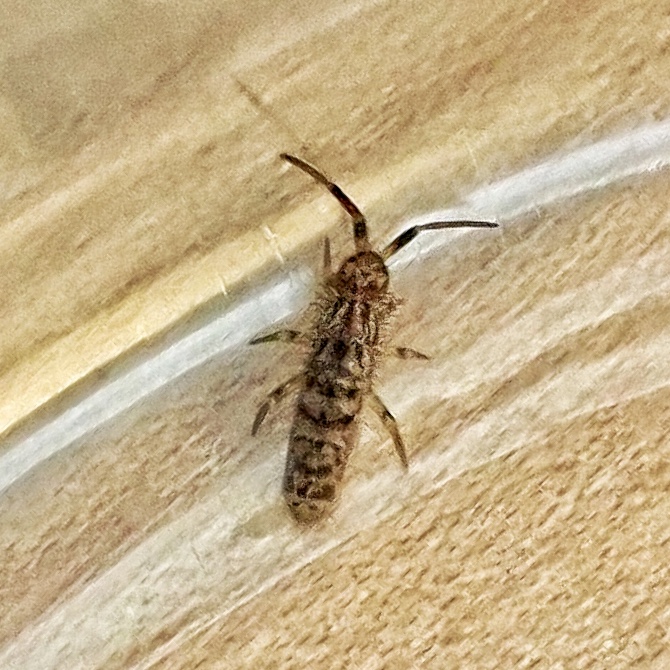
For many years Collembola (springtails) were grouped with Protura (coneheads) and Diplura (two-pronged bristletails) in the class Entognatha, since they were the only groups of Hexapods which have internal mouthparts. Insects are also hexapods but they have external mouthparts. But the three have been found to not be closely related, with the result that Collembola is now a separate class, as are Diplura and Protura. Orchesella villosa now belongs to the order Entomobryomorpha (elongate-bodied springtails), and to the family Entomobryidae (slender springtails).
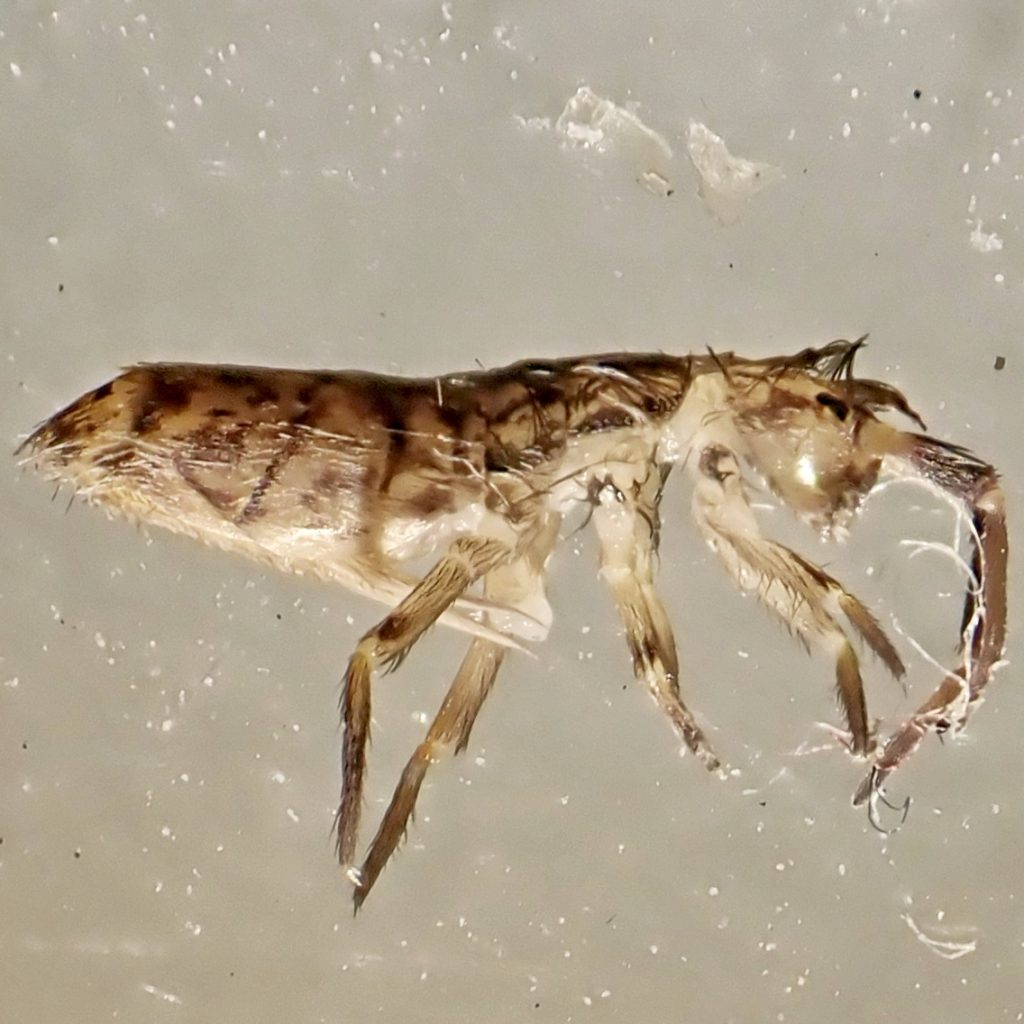
Springtails are distinguished from other six-legged arthropods with internal mouthparts by the presence of a collophore, a tube extending downward from the first abdominal segment, from which they can extend a pair of sticky vesicles. Springtails utilize the collophore to drink, groom themselves, and to turn over when upside down. Most also have a furcula, a sort of spring loaded prong that, when suddenly released from its securing hook (retinaculum), will push forcefully against the substrate and propel them into the air (hence the common name springtails). These tiny, wingless bugs (most are under 2mm, so Orchesella villosa is a relative giant at 4mm) are vitally important in virtually all ecosystems both as decomposers of plant material and as a food source for animals higher up the food chain. They are a very successful class of arthropods, with over 9,000 species around the world, and they have been around for about 400 million years.
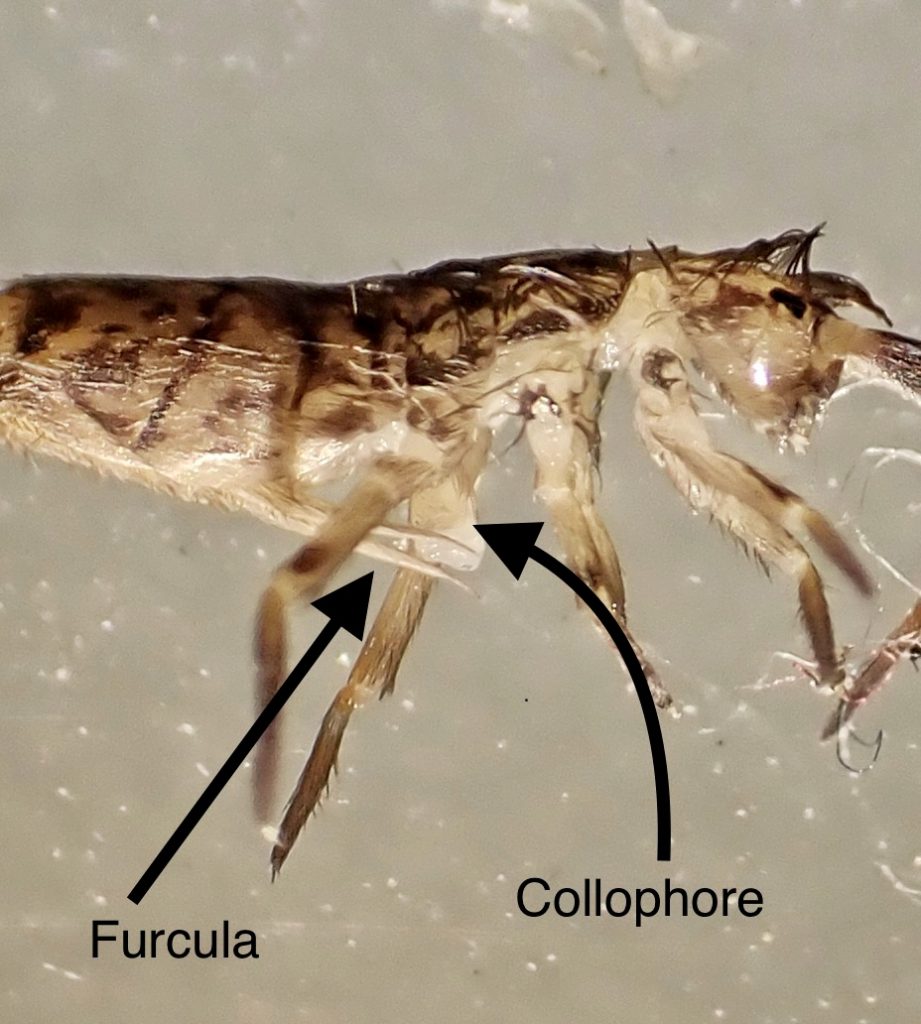
Springtails in general exhibit a growth pattern called indeterminate growth, which means that they continue to grow even when sexually mature. This is unusual among arthropods, and the only insects I can think of offhand that have indeterminate growth are silverfish. At the end of a feeding instar springtails moult into a reproductive phase, and then moult into a feeding phase again, alternating these moults throughout its life. Orchesella villosa is one of several species of Collembola that practice ‘dissociated mating behavior’, which means that the male just kinda leaves its sperm packets laying around hoping a willing female will insert it to inseminate her eggs. The males also destroy spermatophores they encounter that belong to other males. This must work out fairly well since this is a very successful species, but it seems rather laissez-faire to me. And for anyone who thinks these creatures are disgusting or inconsequential, you should visit the Chaos of Delight site for a paean to all things Collembola.
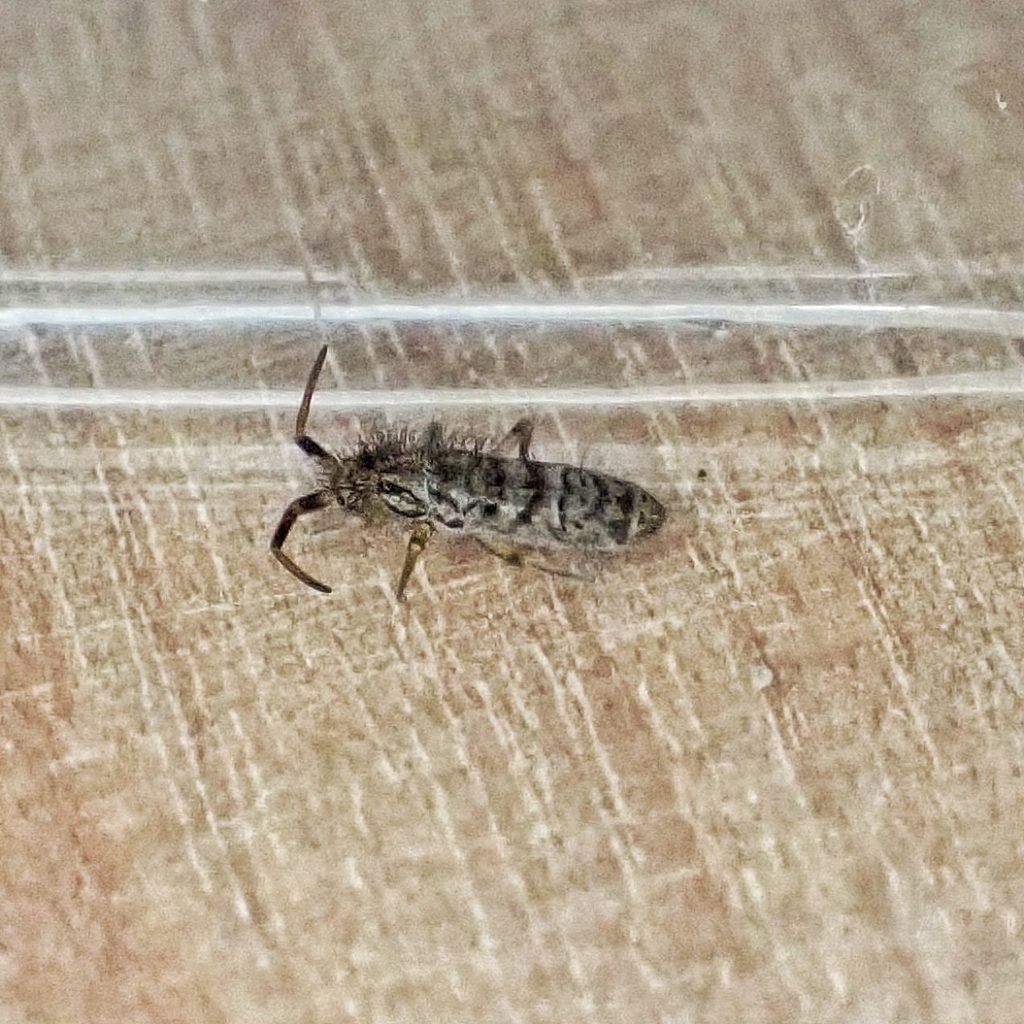
Description-Tiny (3.5-5 mm long) bug, with a cream to grey brown body marked with varying amounts and shapes of purple that are usually lengthwise on the front half and transverse to the rear; segment 2 & 3 have thin, transverse, convex arcs of purple; long, fairly dense, erect hairs on the dorsal surface; antennae with first two segments darker than the rest.
Similar species–Orchesella cincta tends to be darker, less hirsute, and has a white band at mid abdomen.
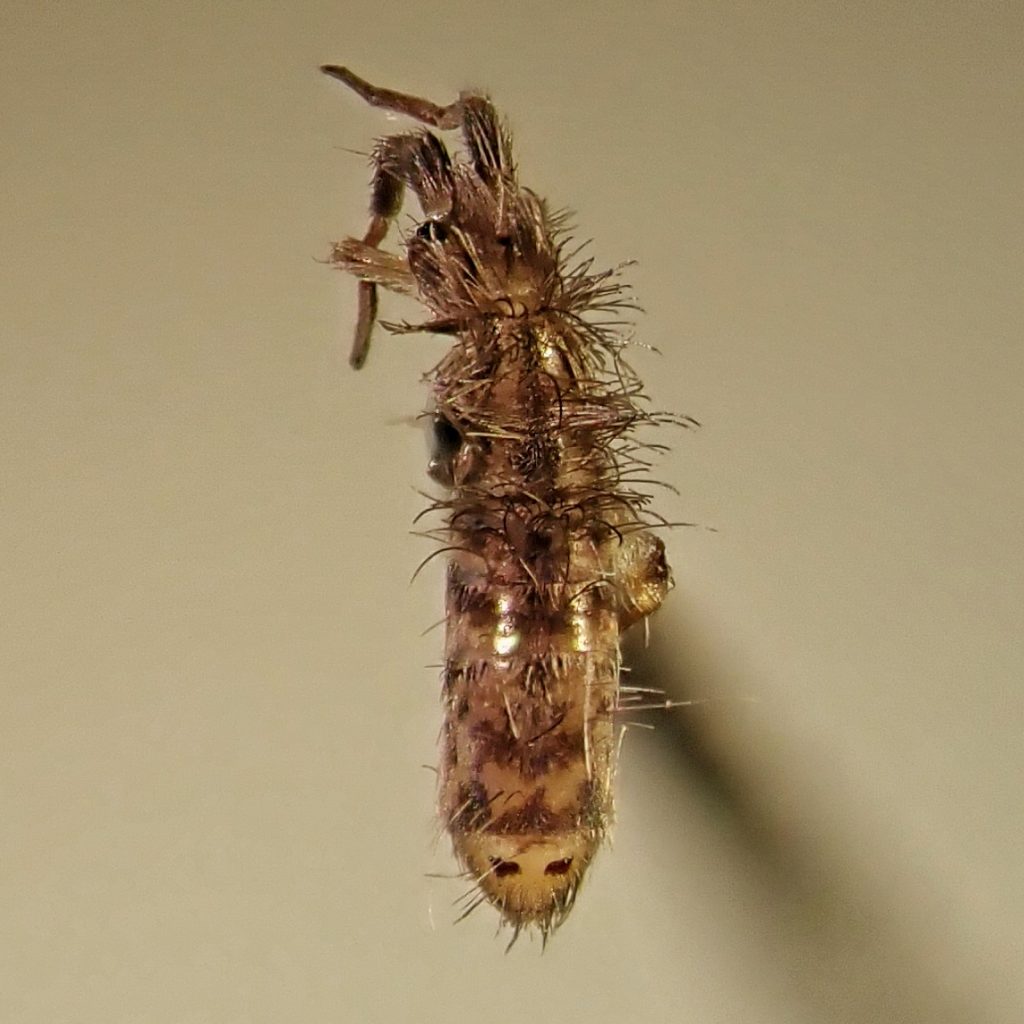
Habitat– Leaf litter and duff on the floor of woodlands and forests.
Range-Eurasian native; introduced and widespread in temperate northern North America; apparently primarily west of the Cascades in our region.
Eats-Bacteria, spores, fungal hyphae, algae, and decaying plant matter.
Eaten by-Most predatory arthropods, small birds, and salamanders.
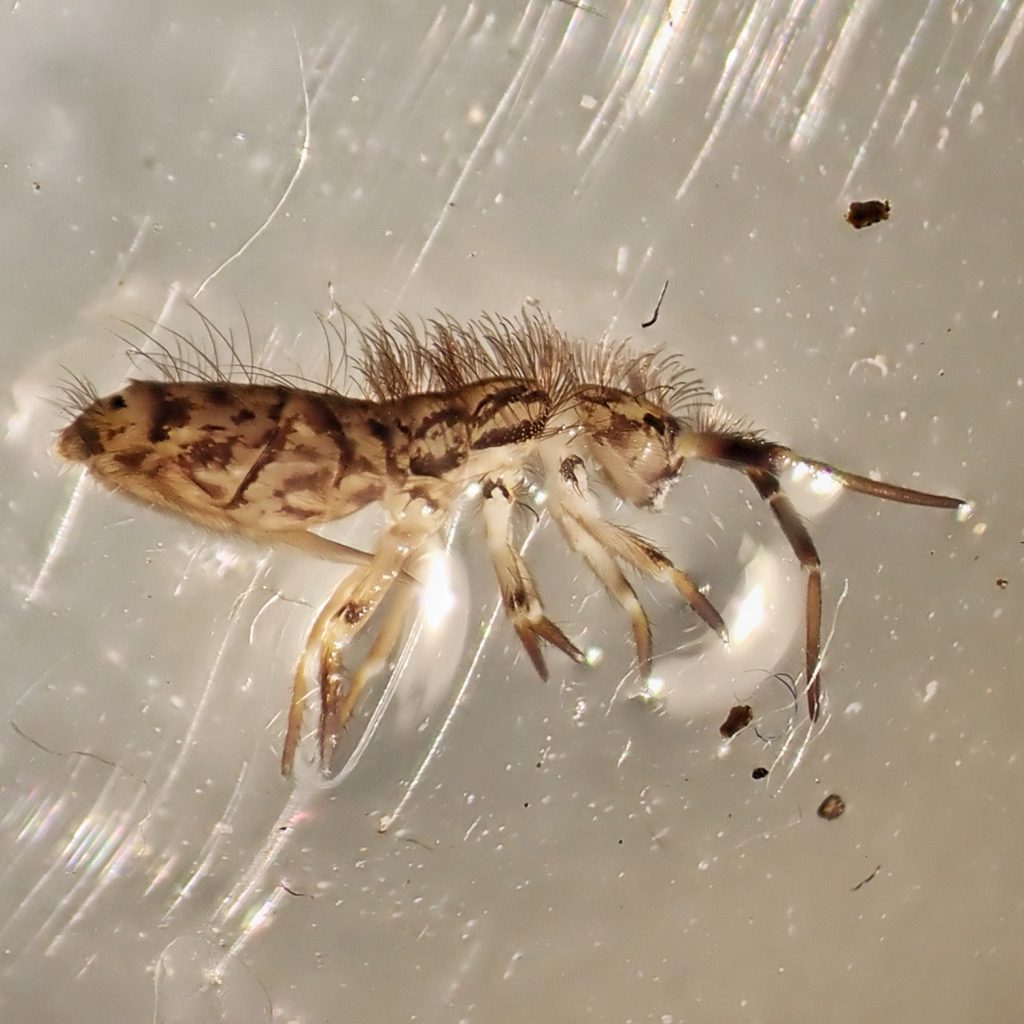
Reproduction– Reproduction alternates between successive moults; male deposits a spermatophore on the substrate which a willing female will insert for fertilization; eggs are laid in clusters on the soil.
Adults active-Active year around, but usually buried pretty deep in leaf litter during the colder months.
Etymology of names–Orchesella would seem to be from the Greek word for ‘little dancer’, which possibly references its jumping ability, although all springtails, well, spring. The specific epithet villosa is from the Latin for ‘hairy’, and seems rather apropos for these shaggy little bugs.
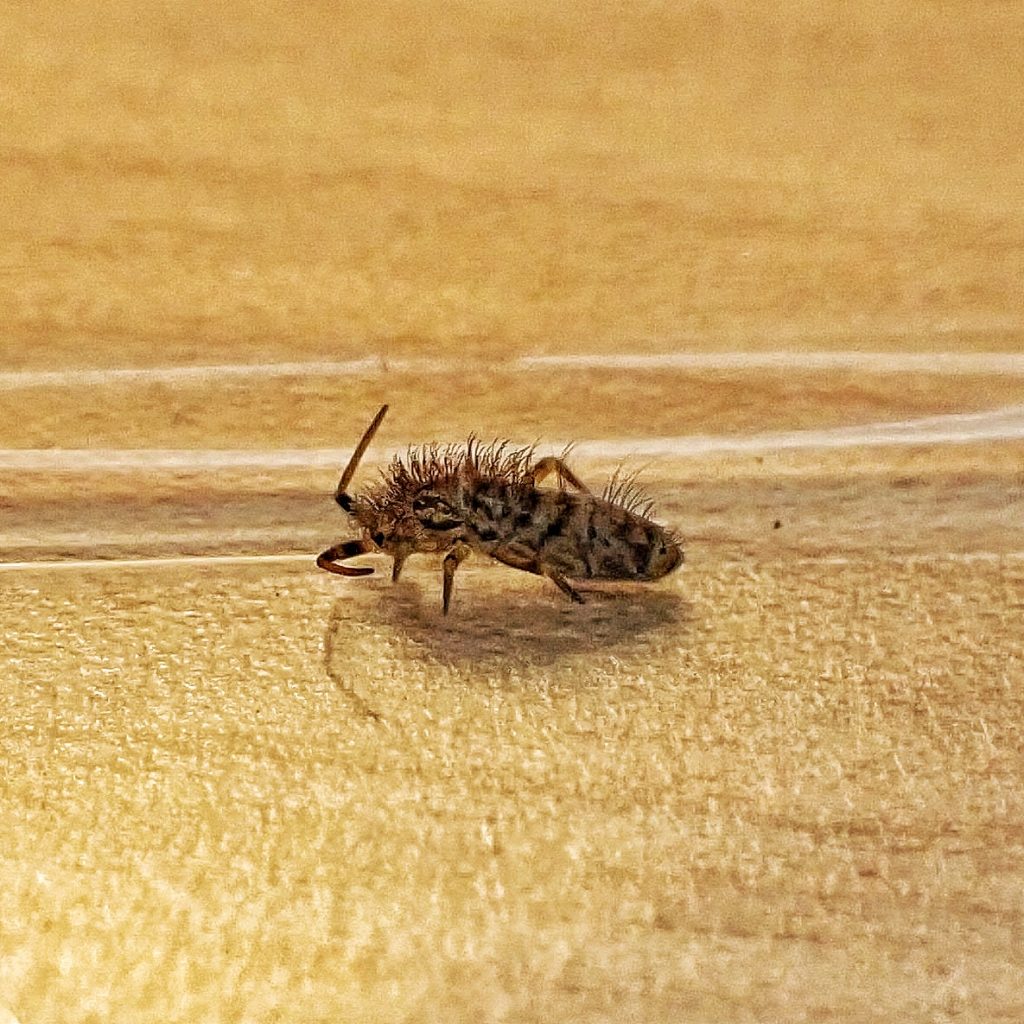
https://www.chaosofdelight.org/collembola-springtails
https://bugguide.net/node/view/86577
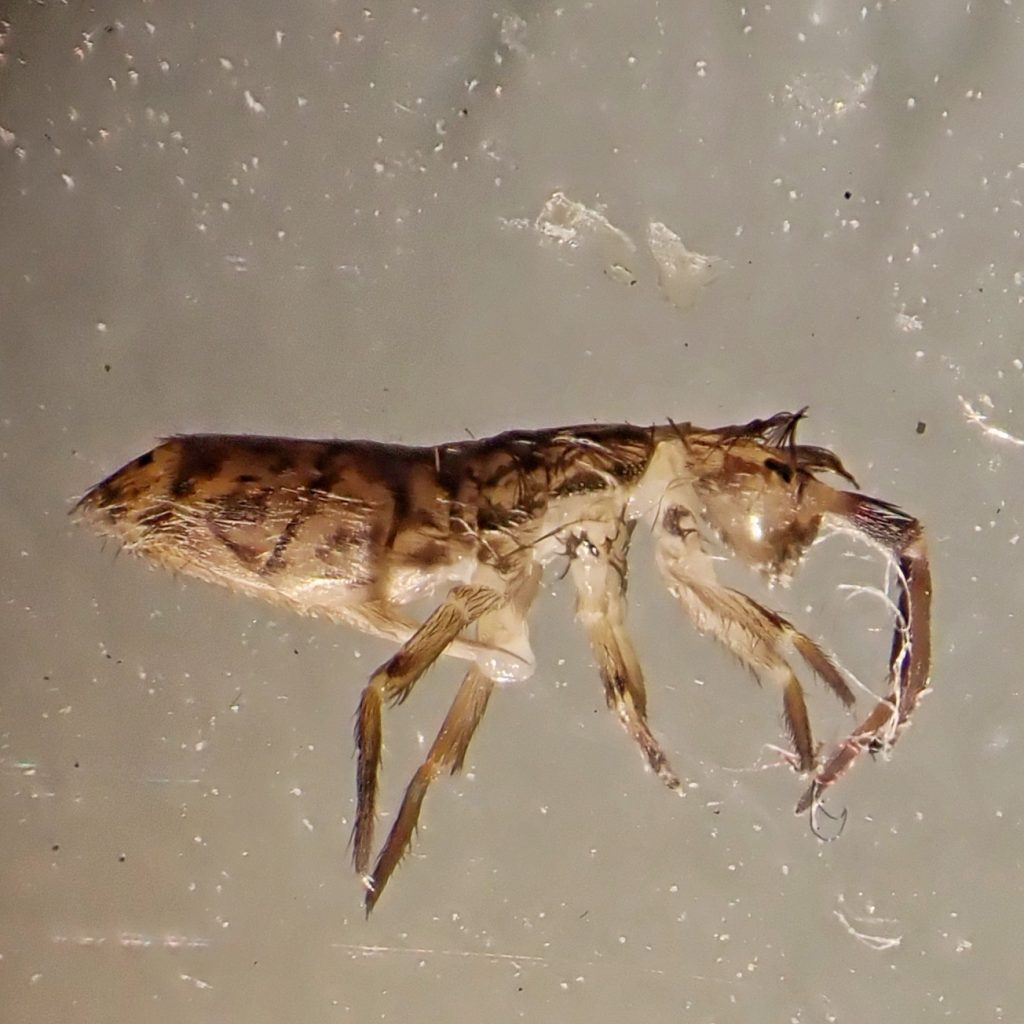
Love your blog. It is the only one that I know of that takes an ecological aproach and covers species in their relation to the environment. I learn a lot each time I read one of your profiles, can’t wait for the next one, let alone for a web site where all are accessible interactively.
Thanks, BIG THANKS!
Thank you, Jochen!